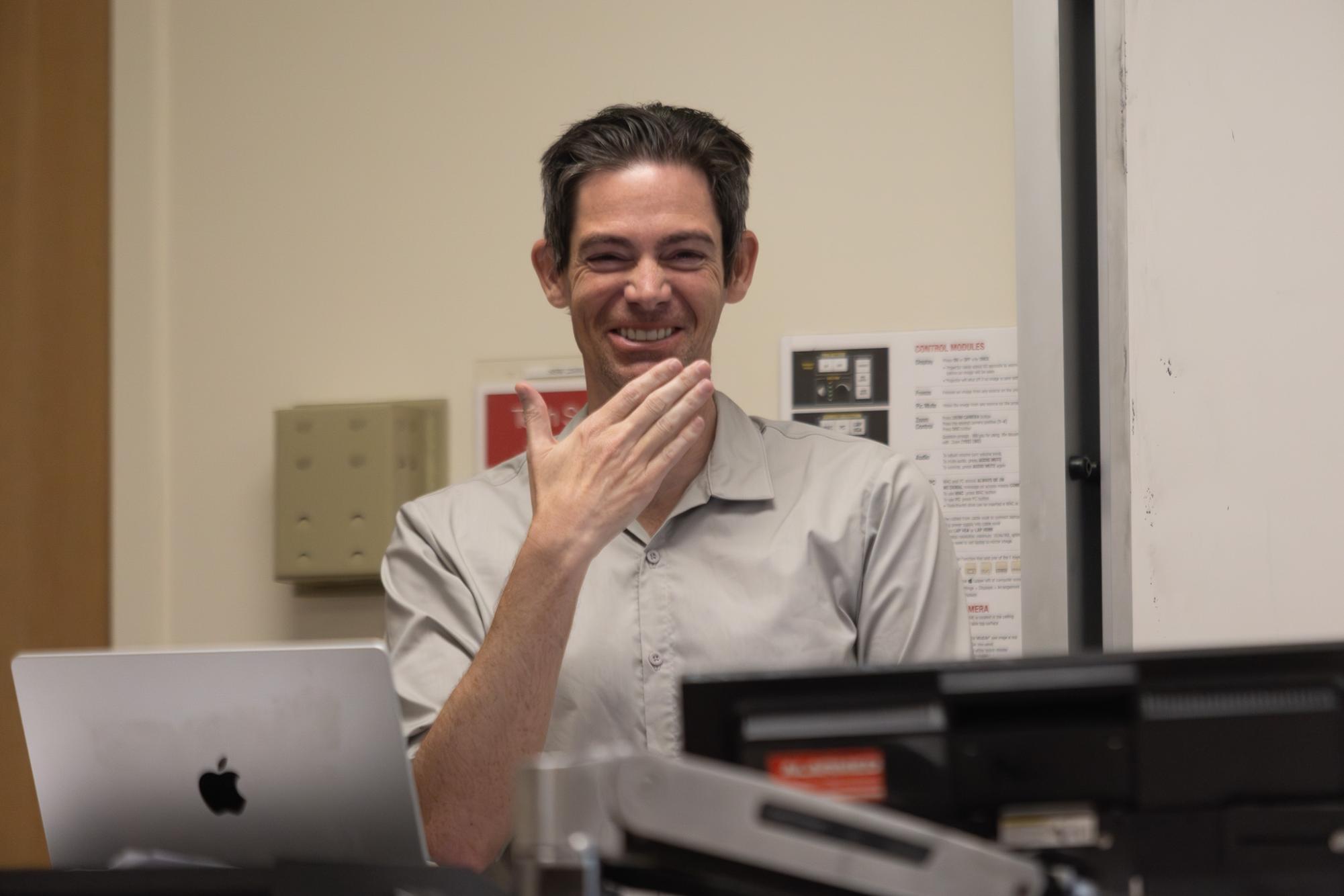Imagine music being played, the warmth of spotlights shining on your face and the vibrations of the floor from dancing coming through your body from the bottom of your feet, yet you are not hearing a sound.
That was the experience of young Garrett Bose, now a San Diego State University professor, when he visited China after graduating high school more than 20 years ago.
This trip to China was a life-changing experience for Bose. It was the first time he traveled with a group of hearing students and none of them knew how to sign, but he and the hearing students took the chance to learn from each other. They started with communicating through spelling the alphabet in American Sign Language.
“From that experience, I came to realize that I can do fine,” he signed and translated by an interpreter. “I can do fine with communication and lack of communication.”
Bose has been teaching ASL at SDSU for almost six years. He moved to San Diego from Los Angeles to seek a more inclusive community, and also for walks by the water and the greenery.
Bose was diagnosed to be profoundly deaf when he was just months old. His parents became suspicious of the ways he reacted to his surroundings and his unresponsiveness to sounds. His family took him to an audiologist where his parents’ doubt was confirmed.
“My parents tried different communication methods with me,” he signed. “This included sign language, oral lip reading (and) a couple of other options. (We) ended up just proceeding with sign language because it’s what worked best for me.”
When Bose was 18 years old, he inquired about cochlear implant but was told he was not a candidate in his situation.
Cochlear implants have been a controversial topic among the Deaf community.
According to Healthline, some said that, unlike hearing aids, a cochlear implant is a surgical procedure that has a chance of leading to complications afterward or complete hearing loss.
However, in most successful cases, patients reported at least a 15% improvement in speech perception after the surgeries. Others argued it was disrespectful because it was an attempt at “fixing” deafness.
Bose noticed the Deaf community grew more accepting of cochlear implants since 2000. Yet, he believed that people should be mindful of the drawbacks.
“The Deaf community. They want the deaf youth to have access to sign language,” he signed.
He went on to explain the importance of knowing and using sign language, especially for children who are hard of hearing. He noticed that they were the ones who struggled the most when communicating because, oftentimes, people would only speak and assume that they could hear everything.
Still, in reality, they might only be hearing parts of the sentence or conversation. This led to language omissions, where the spoken language was never fully captured, and without sign language, nothing was being communicated.
Growing up, Bose did not have to face the same challenges.
“I have a very inclusive family. Everyone signed,” he signed.
Being profoundly deaf did not stop Bose from enjoying music either. Although there is no sound, there are visuals.
“I don’t hear the music, but I do enjoy (it),” he signed. “I enjoy lyrics and lyrical flow. I enjoy visual music through the deaf eyes.”
The biggest setback for his enjoyment of music would be when the interpreters did not sign clearly for him to understand the lyrics.
Before Bose became an ASL professor, his other bachelor’s degree was in digital arts. But then he realized work opportunities were limited in that field and he also didn’t enjoy the social environment. He decided to try teaching in a college setting, so he went back to school in his mid-30s to learn how to teach what he knew and practiced all his life: ASL.
“I never even dreamed of becoming a professor or a teacher,” he signed. “When I actually entered the profession, I fell in love with it.”
Bose began to develop his teaching materials, which he started sharing on social media platforms like Instagram and YouTube. He also created a website.
“As an educated language, (ASL has) only been taught for a limited time,” he signed. “As a notified official language through academic peers under 100 years. In college classes, which means ASL instruction, theory and linguistics are still in the process of being built up.”
There is a lot of room for ASL to grow and evolve, such as 3D singing and mouthphemes that are being implemented.
However, Bose had an idea of his own.
“I’m currently thinking about setting up ASL materials for the markets, publishing them potentially,” Bose signed.
It is an ongoing progress, but Bose looks to do this with the help of a team.

